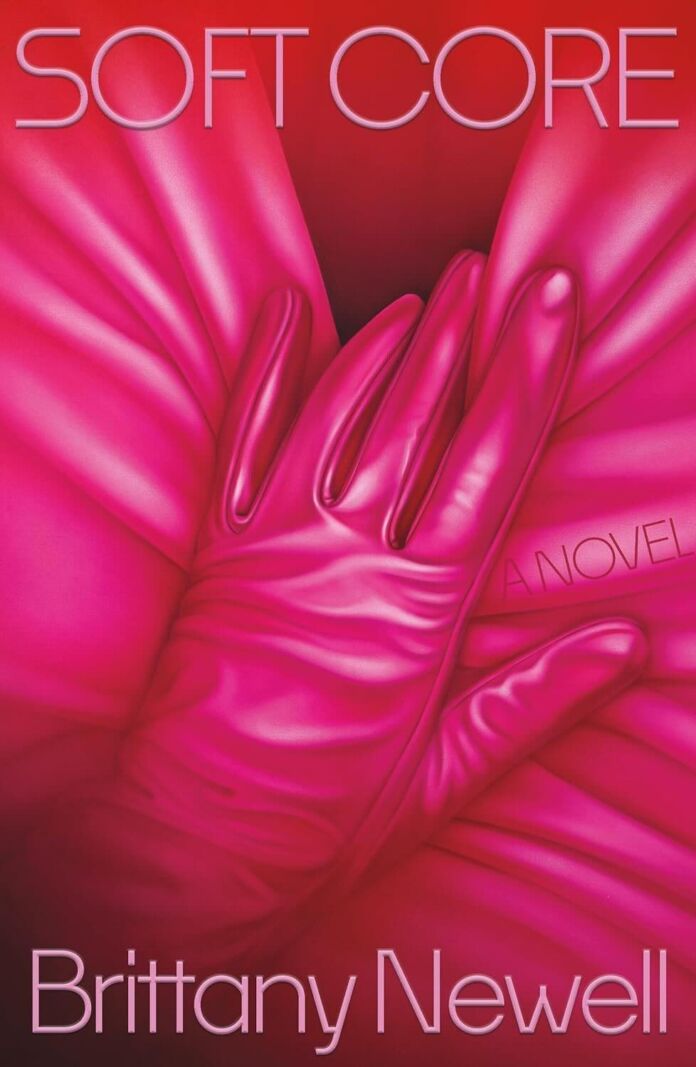Brittany Newell’s second novel, Soft Core, is a hypnotic dive into the neon-lit underbelly of San Francisco, where identity becomes as fluid as the fog rolling in from the bay. Following her debut novel Oola (2017), Newell returns with a more mature, nuanced exploration of desire, loneliness, and the profound human need for connection.
The Dancing Narrative
At the heart of Soft Core by Brittany Newell is Ruth, a directionless twenty-seven-year-old living with her ex-boyfriend Dino in a Victorian house in San Francisco’s Mission district. When she begins stripping at a club called Paradise Lost, she transforms into Baby Blue, stepping into a world where names, like identities, are endlessly malleable. The narrative takes a sharp turn when Dino, a ketamine dealer with a penchant for lingerie, vanishes without warning.
What follows is not your typical missing person story. Instead, Newell crafts a hallucinatory journey through San Francisco’s sexual underground, where Ruth/Baby’s search for Dino becomes increasingly entangled with her own unraveling identity. The city itself becomes a character, its fog-shrouded streets and hidden corners providing the perfect backdrop for this exploration of desire and displacement.
Style and Atmosphere
Newell’s prose is intoxicating, moving between raw vulnerability and savage humor with remarkable agility. Her descriptions of San Francisco’s nightlife are particularly striking:
“The city was dreamy and steamy once more. We swarmed the beaches as if nothing had happened, high-fiving strangers in the surf.”
The author’s command of atmosphere is masterful, creating a world that feels both dreamlike and viscerally real. The strip club scenes are rendered with unflinching detail, neither glamorizing nor condemning the work, but instead exploring the complex dynamics of power, performance, and intimacy.
Character Development
Ruth/Baby is a fascinating protagonist, her voice alternating between sardonic wit and raw vulnerability. Her transformation from Ruth to Baby Blue isn’t simply about adopting a stage name – it’s about the fluid nature of identity itself. Through her encounters with various characters, we see different facets of her personality emerge:
- Simon, the mysterious client with specific requests
- Nobody, an anonymous email correspondent with a suicide fetish
- Emeline, the new dancer who seems to represent everything Ruth isn’t
- Ophelia, a dominatrix who becomes both friend and foil
Themes and Analysis
Identity and Performance
The novel expertly explores the relationship between performance and authenticity. In the strip club, Ruth becomes Baby Blue, but the line between performance and reality increasingly blurs. This theme extends beyond the club, questioning how much of our identity is performance in our daily lives.
Love and Obsession
Newell presents love and obsession as two sides of the same coin. Ruth’s search for Dino becomes increasingly complicated by her own desires and fantasies. The novel asks: When does love become obsession? When does obsession become love?
Urban Alienation
San Francisco emerges as more than a setting – it’s a metaphor for the disconnection and longing that permeates modern urban life. The fog that regularly blankets the city becomes a powerful symbol for the way truth and reality blur in Ruth’s world.
Literary Merit
Newell’s writing shines in its ability to capture the surreal quality of nocturnal city life. Her descriptions are both poetic and precise:
“The fog draped around my body like a boa, like a hug from a man. It was heavy and wet. I wanted to see how long I could stand there, how much I could bear.”
Critiques
While the novel’s dreamlike quality is generally effective, there are moments when the plot becomes too nebulous, potentially losing readers in its atmospheric haze. Some subplots, particularly those involving minor characters at the strip club, feel underdeveloped.
The pacing in the middle section occasionally lags, and the resolution might feel too ambiguous for readers seeking more concrete closure. However, these are minor quibbles in what is otherwise a compelling and ambitious work.
Comparison and Context
Fans of Melissa Febos’s Whip Smart and Janet Fitch’s White Oleander will find familiar themes here, though Newell’s voice is distinctly her own. The novel also brings to mind the dreamlike quality of Haruki Murakami’s work, particularly in its exploration of urban loneliness and the blending of reality and fantasy.
Final Verdict
Soft Core by Brittany Newell is a bold, provocative novel that defies easy categorization. While it may not appeal to readers seeking conventional narrative resolution, those willing to surrender to its dreamlike logic will find a rich, rewarding exploration of identity, desire, and the stories we tell ourselves about who we are.
The novel is a good read for its innovative approach to storytelling, vivid prose, and unflinching examination of contemporary relationships and identity. Despite its occasional meandering, it remains a significant achievement that marks Newell as a writer to watch.
Who Should Read This
This book is ideal for readers who:
- Appreciate experimental literary fiction
- Enjoy complex explorations of identity and sexuality
- Are drawn to atmospheric urban narratives
- Don’t require neat plot resolutions
- Are interested in contemporary feminist literature
About the Author
Brittany Newell continues to establish herself as a bold voice in contemporary fiction. Following her debut novel Oola, Soft Core by Brittany Newell demonstrates significant artistic growth while maintaining her signature style of blending the surreal with the visceral.





